Magnepan MG1.7i Loudspeaker

Like many long-term music/audio enthusiasts, I have seen (and heard) a long succession of conventional speakers (drivers-in-a-box). Unfortunately, that description (“conventional”) aptly summarizes the sonic caliber of many. Simply put, live music does not sound like drivers in a box.
Of course there have been some truly inventive exceptions along the way. These include the original Quad electrostatic, the KLH Nine, and a scant few others.
In more recent times, there have been some outstanding (and musical) achievements in the ubiquitous drivers-on-baffles-in-boxes. These would certainly include offerings from Wilson Audio and (more recently) from Magico. Both of these companies have exercised almost super-human design efforts to banish spurious sounds from speaker enclosures and the drivers themselves. The goal, as always, has been to let the music flow through the speaker unaltered. Much easier said than done.
The first time I encountered a Magneplanar Tympani I did not know what to make of it. No cones, no box, what the heck was this thing? It looked more like a hinged, multi-panel room-divider than a speaker. When I first got the Tympani 1 speaker, many visitors to my home wandered around the listening room wondering where the speakers were. Given the customary appearance of box speakers, they were truly surprised!
The Magneplanar Tympani was designed by Jim Winey, a music-loving engineer for 3M in the Minneapolis area. Winey fashioned highly unusual drive elements for the speakers (planar-magnetic strips, radiating sound equally from both the front and the back of the speakers—dipolar). There were no enclosures to speak of, and no conventional “drivers,” either.
These hinged three-panel behemoths were distributed by Audio Research (the undisputed king of high-end electronics back in the 1970s). Not surprisingly, Magneplanars were frequently paired with ARC electronics, in high-end audio shops and audiophile listening rooms alike.
One thing that has been consistent to this day about Magneplanar/Magnepan products is their ongoing evolution and improvement over time. For example, the Tympani 1D was a big improvement on many levels over the original Tympani 1, although they looked identical.
One weekend long ago, I conducted initial listening tests of the Tympani 1D and the legendary Dahlquist DQ-10. Much to my surprise, the bottom end of the Maggies was the best I had ever heard. It was quick and clean and had exemplary pitch definition, which was not the case with many of the woofers in monster dynamic systems. It was uncannily lifelike with percussion, especially lower-pitched drums like tom-toms.
On the other hand, as good as they were, I noticed some minor flaws and colorations in the midrange of the Magneplanars. The vital midband was slightly hooded and hollow sounding, especially with certain instruments (e.g., when listening to a two-track mastertape of a local bluegrass band, the Dahlquist conveyed a more realistic tone from fiddles and male vocals than the Magneplanar did). The Magneplanars also sounded a bit veiled, with a discernible fine-grain structure superimposed on the midrange (and to a lesser degree) on the top end. Of course, they obliterated the DQ-10 in bass performance, which was not that speaker’s forte. Still, a very instructive comparison for speakers of the time.
My next Magneplanar experience came from the fertile mind of the late, great HP. By this time, I had moved up to the Infinity QRS as my reference speaker system. That ambitious, creative design had some small drawbacks, though, and one big one. The big one was the attempted (but unsuccessful) blending between fast low-mass midrange (EMIM) and high-frequency (EMIT) drivers and the massive 15-inch woofer. The QRS woofer did everything you’d expect in terms of extremely low-frequency reproduction and visceral impact. However, the vaunted pitch definition of the Tympani put it to shame. The woofer was sluggish, thick, and distractingly discontinuous with the rest of the QRS system.
ฉันเคยเห็น (และได้ยิน) ลำโพงแบบธรรมดา (แบบมีไดรเวอร์ในกล่อง) มาหลายต่อหลายรุ่น เช่น เดียว กับผู้ที่ชื่นชอบดนตรีและเสียงมาอย่างยาวนาน น่าเสียดายที่คำอธิบายดังกล่าว (“แบบธรรมดา”) สรุปคุณภาพเสียงของลำโพงหลายๆ รุ่นได้อย่างเหมาะสม พูดง่ายๆ ก็คือ ดนตรีสดไม่ได้ให้เสียงเหมือนกับว่ามีไดรเวอร์ในกล่อง
แน่นอนว่ามีข้อยกเว้นที่สร้างสรรค์อย่างแท้จริงอยู่บ้างตลอดมา ซึ่งรวมถึงQuad electrostatic รุ่นดั้งเดิม KLH Nineและรุ่นอื่นๆ อีกไม่กี่รุ่น
ในช่วงไม่กี่ปีที่ผ่านมา มีผลงานที่โดดเด่น (และโดดเด่นในด้านดนตรี) มากมายในไดรเวอร์ที่ติดอยู่ในแบฟเฟิลในกล่องลำโพง ซึ่งรวมไปถึงผลิตภัณฑ์จาก Wilson Audio และ (ล่าสุด) จาก Magico บริษัททั้งสองแห่งนี้ได้ใช้ความพยายามในการออกแบบที่แทบจะเหนือมนุษย์เพื่อขจัดเสียงที่ไม่พึงประสงค์ออกจากกล่องลำโพงและไดรเวอร์เอง เป้าหมายคือปล่อยให้เสียงเพลงไหลผ่านลำโพงโดยไม่เปลี่ยนแปลง ซึ่งทำได้ง่ายกว่าพูดมาก
ครั้งแรกที่ผมเจอ Magneplanar Tympani ผมไม่รู้ว่าจะทำยังไงกับมันดี ไม่มีกรวย ไม่มีกล่อง แล้วเจ้าสิ่งนี้มันคืออะไรกันแน่ มันดูเหมือนแผ่นกั้นห้องแบบบานพับมากกว่าจะเป็นลำโพง เมื่อผมได้ลำโพง Tympani 1 มาครั้งแรก แขกที่มาบ้านผมหลายคนเดินไปทั่วห้องฟังด้วยความสงสัยว่าลำโพงอยู่ที่ไหน เมื่อดูจากรูปลักษณ์ปกติของลำโพงแบบกล่องแล้ว พวกเขาประหลาดใจจริงๆ!
Magneplanar Tympani ออกแบบโดย Jim Winey วิศวกรผู้รักเสียงเพลงของบริษัท 3M ในพื้นที่มินนิอาโปลิส Winey ได้สร้างชิ้นส่วนขับเคลื่อนที่แปลกประหลาดมากสำหรับลำโพง (แถบแม่เหล็กระนาบที่แผ่เสียงออกมาเท่าๆ กันทั้งจากด้านหน้าและด้านหลังของลำโพง—ไดโพลาร์) ไม่มีตู้ลำโพงให้พูดถึง และไม่มี “ไดรเวอร์” แบบทั่วไปด้วย
ลำโพงสามแผงแบบบานพับขนาดยักษ์นี้จัดจำหน่ายโดย Audio Research (ผู้ครองตำแหน่งเจ้าตลาดอุปกรณ์อิเล็กทรอนิกส์ระดับไฮเอนด์ในช่วงทศวรรษ 1970) ไม่น่าแปลกใจที่ Magneplanar มักถูกจับคู่กับอุปกรณ์อิเล็กทรอนิกส์ ARC ทั้งในร้านขายเครื่องเสียงระดับไฮเอนด์และห้องฟังเพลงของนักเล่นเครื่องเสียงมืออาชีพ
สิ่งหนึ่งที่ยังคงสม่ำเสมอมาจนถึงทุกวันนี้เกี่ยวกับผลิตภัณฑ์ Magneplanar/Magnepan ก็คือวิวัฒนาการและการปรับปรุงอย่างต่อเนื่องตลอดเวลา ตัวอย่างเช่น Tympani 1D นั้นมีการปรับปรุงครั้งใหญ่ในหลายระดับเมื่อเทียบกับ Tympani 1 รุ่นเดิม แม้ว่าจะดูเหมือนกันทุกประการก็ตาม
เมื่อสุดสัปดาห์ที่ผ่านมา ฉันได้ทดสอบการฟังเบื้องต้นของ Tympani 1D และ Dahlquist DQ-10 ซึ่งเป็นรุ่นตำนาน ซึ่งทำให้ฉันประหลาดใจมากที่เสียงเบสของ Maggies เป็นเสียงเบสที่ดีที่สุดเท่าที่ฉันเคยได้ยินมา เสียงเบสมีความรวดเร็วและใส และมีระดับเสียงที่ชัดเจน ซึ่งไม่เหมือนกับวูฟเฟอร์หลายๆ ตัวในระบบไดนามิกขนาดใหญ่ เสียงเบสมีความสมจริงอย่างน่าประหลาดใจเมื่อใช้กับเครื่องเพอร์คัชชัน โดยเฉพาะกลองที่มีระดับเสียงต่ำ เช่น ทอม-ทอม
ในทางกลับกัน แม้ว่า Magneplanar จะดีแค่ไหน ฉันก็ยังสังเกตเห็นข้อบกพร่องเล็กๆ น้อยๆ และสีสันที่ผิดเพี้ยนในระดับกลางของลำโพงรุ่นนี้ ช่วงกลางที่สำคัญนั้นฟังดูคลุมเครือและกลวงเล็กน้อย โดยเฉพาะอย่างยิ่งกับเครื่องดนตรีบางชิ้น (เช่น เมื่อฟังมาสเตอร์เทปสองแทร็กของวงบลูแกรสในท้องถิ่น Dahlquist จะถ่ายทอดโทนเสียงที่สมจริงกว่าจากไวโอลินและเสียงร้องของผู้ชายมากกว่า Magneplanar) นอกจากนี้ Magneplanar ยังฟังดูคลุมเครือเล็กน้อย โดยมีโครงสร้างแบบละเอียดที่สังเกตได้ซ้อนทับบนช่วงกลาง (และในระดับที่น้อยกว่า) ที่ปลายเสียงสูง แน่นอนว่ามันบดบัง DQ-10 ในด้านประสิทธิภาพเสียงเบส ซึ่งไม่ใช่จุดเด่นของลำโพงรุ่นนี้ อย่างไรก็ตาม การเปรียบเทียบลำโพงในยุคนั้นก็ให้ข้อคิดที่ดีมาก
ประสบการณ์ Magneplanar ครั้งต่อไปของฉันมาจากความคิดอันอุดมสมบูรณ์ของ HP ผู้ยิ่งใหญ่ผู้ล่วงลับ ในเวลานี้ ฉันได้ย้ายมาใช้ Infinity QRS เป็นระบบลำโพงอ้างอิงของฉันแล้ว อย่างไรก็ตาม การออกแบบที่ทะเยอทะยานและสร้างสรรค์นี้มีข้อเสียเล็กน้อยอยู่บ้าง แต่ข้อเสียที่สำคัญอย่างหนึ่งก็คือ การพยายาม (แต่ไม่ประสบความสำเร็จ) การผสมผสานระหว่างไดรเวอร์เสียงกลางมวลต่ำที่รวดเร็ว (EMIM) และไดรเวอร์เสียงความถี่สูง (EMIT) กับวูฟเฟอร์ขนาด 15 นิ้วขนาดใหญ่ วูฟเฟอร์ QRS ทำได้ทุกอย่างที่คุณคาดหวังในแง่ของการสร้างเสียงความถี่ต่ำเป็นพิเศษและผลกระทบต่อประสาทสัมผัส อย่างไรก็ตาม การกำหนดระดับเสียงที่ได้รับการยกย่องของ Tympani ทำให้เสียงนั้นดูน่าอาย วูฟเฟอร์นั้นเชื่องช้า หนา และไม่ต่อเนื่องจนรบกวนระบบ QRS ส่วนที่เหลือ
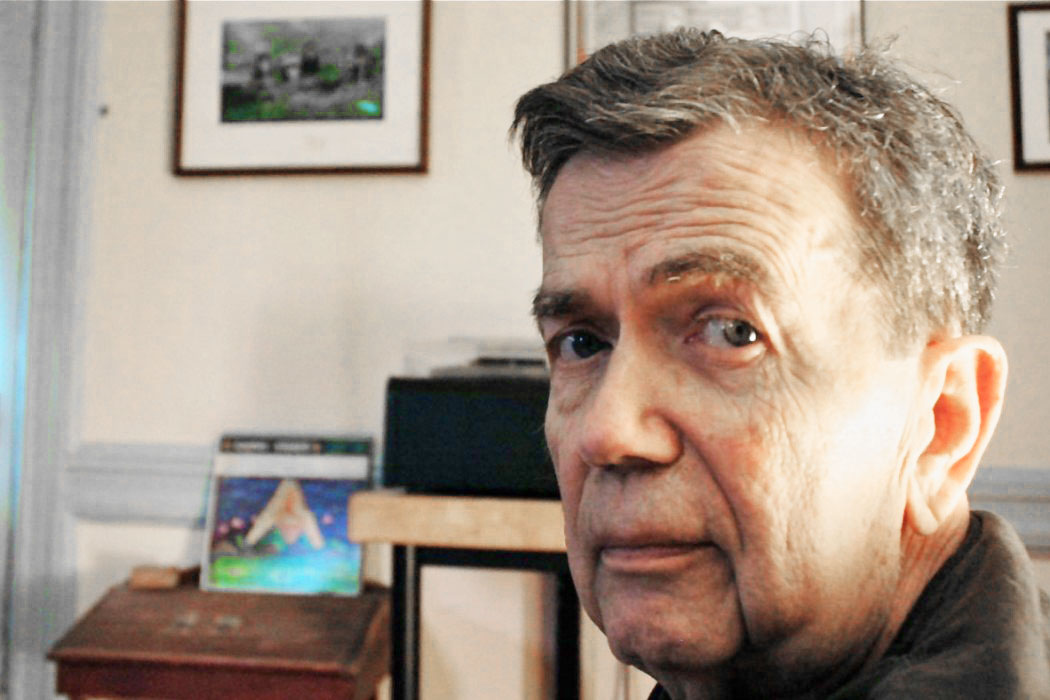
HP reached the same conclusion and came up with a truly creative idea. Why not use the Magneplanar panels for bass reproduction, and replace the earth-shaking Infinity woofer with the Tympani 1D? We both had the impressive Carl Marchisotto-designed Dahlquist DQ-LP1 electronic crossover, which made the merger of dissimilar speakers work very well. This change single-handedly removed our significant reservations about the rough sutures between the big bad woofer and the nimble upper ranges of the speaker. I remember tying a long piece of twine to the Magneplanars and living in fear that the whole contraption would come crashing down on the floor. Luckily it did not.
Perhaps even more stunning than the greatly improved sense of coherence and continuity was the incredibly lifelike soundstage the system produced (uncannily like real music being played in real space). The unerring placement and spacing of performers in the venue were truly remarkable.
HP ได้ข้อสรุปเดียวกันและได้ไอเดียสร้างสรรค์อย่างแท้จริง ทำไมไม่ใช้แผง Magneplanar สำหรับการสร้างเสียงเบส และเปลี่ยนวูฟเฟอร์ Infinity ที่น่าตื่นตะลึงด้วย Tympani 1D เราทั้งคู่มีครอสโอเวอร์อิเล็กทรอนิกส์ Dahlquist DQ-LP1 ที่ออกแบบโดย Carl Marchisotto ซึ่งทำให้การรวมลำโพงต่างรุ่นเข้าด้วยกันนั้นได้ผลดีมาก การเปลี่ยนแปลงนี้เพียงอย่างเดียวทำให้ข้อสงสัยที่สำคัญของเราเกี่ยวกับรอยต่อที่หยาบระหว่างวูฟเฟอร์ขนาดใหญ่ที่แย่มากกับช่วงเสียงบนที่คล่องแคล่วของลำโพงหายไป ฉันจำได้ว่าฉันมัดเชือกยาวๆ ไว้กับ Magneplanar และกลัวว่าอุปกรณ์ทั้งหมดจะหล่นลงมาที่พื้น โชคดีที่มันไม่เป็นเช่นนั้น
บางทีสิ่งที่น่าตื่นตาตื่นใจยิ่งกว่าความรู้สึกสอดคล้องและต่อเนื่องที่ได้รับการปรับปรุงให้ดีขึ้นอย่างมากก็คือเวทีเสียงที่เหมือนจริงอย่างเหลือเชื่อที่ระบบสร้างขึ้น (เหมือนดนตรีจริงที่เล่นในพื้นที่จริงอย่างน่าประหลาดใจ) การจัดวางและระยะห่างของนักแสดงในสถานที่นั้นน่าทึ่งอย่างแท้จริง
The Present
The balance of this review will now focus on the Magnepan MG1.7i speaker. However, a number of the themes outlined previously are very applicable to the 1.7i and touch directly on the speaker’s remarkably lifelike sound (and “lifelike” is perhaps the most noteworthy attribute that can be bestowed on an audio component).
The 1.7i sounded “good” when first unpacked and connected to my audio system. However, as I came to realize, it is far better than “good.” Attaining the qualities that make it exceptional requires some work and effort. To wit:
The speaker requires significant break-in time before certain sonic constraints gradually melt away, leaving a far better transducer. Prior to break-in, the 1.7i displays limited dynamic range, detail, and bass impact. Initially it can sound overly polite and a bit lifeless.
Finding proper positioning and placement for the 1.7i is also somewhat of a challenge. Again, it can sound good without tedious placement experimentation, but some of the speaker’s magic will not be evident. The instructions in Magnepan’s owner’s manual are very helpful and down-to-earth (similar to the company itself, in my experience). First, obtain an instructive recording of quality bass material of varying frequencies. Play it, while slightly moving the speakers on the long axis of your room. Ideally, the varying bass frequencies should be uniform in amplitude (e.g., minimum room resonances, peaks, and valleys). Although these speakers will not generate shuddering subsonic notes (such as a pipe organ can deliver), they are capable of quick, clean bottom-end reproduction with excellent pitch definition.
Magnepan’s manual indicates that the tweeters can be placed on the inside or outside of the speaker panels. The speakers are mirror-imaged pairs. My conclusion was to use the inside edge for the tweeters, if you want the absolute best imaging and spatial presentation they are capable of. Placing the tweeters on the outside edge of the speakers does offer a larger listening position (sweet spot). However, you lose some imaging specificity, lifelike (there’s that word again) dimensionality, and verisimilitude of image space. Also, the speakers must be slightly canted to allow the lower-mass tweeter to be slightly farther away from the listener than the bass/midrange elements for proper coherence.
Unless your room is very large (i.e., the speakers are far away from the rear wall), you will need some kind of sonic damping material on the walls behind the speakers to reduce the ratio of reflected-to-direct sound. This is one of the unavoidable drawbacks of dipole speakers. Placing these speakers too close to the back wall mars the lateral imaging precision. The same thing holds true for undamped, reflective rear walls. Worst case, this overly reflective combination renders the sound somewhat splattered and diffuse in terms of the placement specificity the speakers are capable of.
To make things more challenging, like most stellar speakers, the Magnepans are very revealing of the flaws in associated equipment and source material. I made several changes during my testing sessions, and easily detected the “personality” of the upstream gear and source. When properly set up, the Magnepan 1.7i can sound very good with a wide range of components and recorded music. Until you have tried them with truly commensurate components and music, though, you won’t fully experience what the speaker is capable of.
Last but not least, these speakers present a challenge for amplifiers to drive (4 ohms impedance at best). Although I was able to get enough volume out of various amplifiers, even ordinarily unstressed amplifiers got much warmer than normal after a lengthy listening session with the 1.7i. These are not the speakers for puny (if sonically glorious) single-ended triode (SET) amplifiers. Like all Magnepan/Magneplanar designs I have worked with over the years, a high-current amplifier (with impeccable sound, of course) is best.
The Magnepan 1.7i is a full-range three-way system (bass/midrange, tweeter, super-tweeter) employing quasi-ribbon technology throughout. As is easily visible when examining the speaker panels, the bulk of the driver area is for the lower midrange/bass frequencies (especially the bass). The larger Magnepans do have better low-end extension (as witnessed on the large Tympani series speakers, as well as the larger current Magnepan 3.7i, 20.7, and 30.7 models).
I have had extensive experience with the predecessors of the 1.7i (the 1.6 and 1.7). Here is a relevant quote about the older models from Magnepan’s website: “The 1.7 is a departure from Magnepan’s 41-year history of using planar-magnetic drivers for the bass or lower midrange. The use of quasi-ribbon technology down into the lower midrange and bass will provide a new level of coherence.”
This is absolutely true and, I suspect, the absence of quasi-ribbon drivers (which simply didn’t exist back then) was the cause of some of the sonic anomalies in the lower midrange of the Tympani models noted above. Once broken in and placed properly, the 1.7i is noticeably purer, less colored, and more continuous/coherent than any other moderate-size Magnepan model I have heard (including its immediate predecessors, the 1.6 and 1.7). The relatively small size of the 1.7i (for a Magnepan design) helps it to excel in a wider range of room sizes than its larger brethren.
Especially for a speaker of modest cost, the 1.7i does remarkably well in accurately reproducing a wide range of musical instruments and human voices. To a large degree, related instruments (e.g., reeds, woodwinds, brass) not only sound like their larger instrument group, but uncannily like the specific instruments they are, even in musical passages featuring multiple instruments playing at the same time. The 1.7i puts most speakers to shame in this regard.
ปัจจุบัน
ส่วนที่เหลือของบทวิจารณ์นี้จะเน้นที่ลำโพง Magnepan MG1.7i อย่างไรก็ตาม หัวข้อต่างๆ ที่ได้อธิบายไว้ก่อนหน้านี้สามารถนำไปใช้กับลำโพง Magnepan MG1.7i ได้เป็นอย่างดี และเกี่ยวข้องกับเสียงที่เหมือนจริงอย่างน่าทึ่งของลำโพงโดยตรง (และ “เหมือนจริง” อาจเป็นคุณสมบัติที่สำคัญที่สุดที่สามารถมอบให้กับส่วนประกอบเสียงได้)
เมื่อแกะกล่องและเชื่อมต่อกับระบบเสียงครั้งแรก เสียงของ 1.7i นั้นฟังดู “ดี” อย่างไรก็ตาม เมื่อฉันเริ่มตระหนักว่ามันดีกว่า “ดี” มาก การบรรลุคุณสมบัติที่ทำให้มันยอดเยี่ยมนั้นต้องใช้ความพยายามและความพยายามพอสมควร กล่าวคือ:
ลำโพงต้องใช้เวลาในการปรับตัวพอสมควร ก่อนที่ข้อจำกัดด้านเสียงบางอย่างจะค่อยๆ หมดไป ทำให้เหลือตัวแปลงสัญญาณที่ดีกว่ามาก ก่อนที่จะปรับตัว ลำโพง 1.7i จะแสดงช่วงไดนามิก รายละเอียด และผลกระทบต่อเสียงเบสที่จำกัด ในตอนแรก เสียงอาจฟังดูสุภาพเกินไปและไม่มีชีวิตชีวา
การหาตำแหน่งที่เหมาะสมและการวางตำแหน่งสำหรับ 1.7i ก็เป็นความท้าทายในระดับหนึ่งเช่นกัน อีกครั้ง มันอาจฟังดูดีโดยไม่ต้องทดลองวางตำแหน่งที่น่าเบื่อ แต่ความมหัศจรรย์บางอย่างของลำโพงจะไม่ปรากฏให้เห็น คำแนะนำในคู่มือของเจ้าของ Magnepan นั้นมีประโยชน์มากและเป็นกันเอง (คล้ายกับบริษัทเองตามประสบการณ์ของฉัน) ขั้นแรก ให้บันทึกเสียงเบสคุณภาพดีที่มีความถี่ต่างๆ กัน เล่นโดยขยับลำโพงเล็กน้อยบนแกนยาวของห้องของคุณ ตามหลักการแล้ว ความถี่เบสที่เปลี่ยนแปลงควรมีแอมพลิจูดที่สม่ำเสมอ (เช่น เสียงสะท้อนในห้อง จุดสูงสุด และจุดต่ำสุด) แม้ว่าลำโพงเหล่านี้จะไม่สร้างโน้ตที่สั่นสะเทือนต่ำกว่าเสียง (เช่นที่ออร์แกนท่อสามารถส่งออกได้) แต่ก็สามารถสร้างเสียงเบสที่ต่ำและชัดเจนได้อย่างรวดเร็วพร้อมระดับเสียงที่ยอดเยี่ยม
คู่มือของ Magnepan ระบุว่าทวีตเตอร์สามารถวางไว้ด้านในหรือด้านนอกแผงลำโพงได้ ลำโพงเป็นคู่ที่สะท้อนภาพกระจก ข้อสรุปของฉันคือใช้ขอบด้านในสำหรับทวีตเตอร์ หากคุณต้องการภาพและการนำเสนอเชิงพื้นที่ที่ดีที่สุดเท่าที่จะเป็นไปได้ การวางทวีตเตอร์ไว้ที่ขอบด้านนอกของลำโพงจะช่วยให้ได้ตำแหน่งการฟังที่กว้างขึ้น (จุดที่เหมาะสมที่สุด) อย่างไรก็ตาม คุณจะสูญเสียความจำเพาะของภาพ มิติที่เหมือนจริง (คำนั้นอีกแล้ว) และความสมจริงของพื้นที่ภาพ นอกจากนี้ ลำโพงจะต้องเอียงเล็กน้อยเพื่อให้ทวีตเตอร์ที่มีมวลน้อยกว่าอยู่ห่างจากผู้ฟังเล็กน้อยกว่าองค์ประกอบเสียงเบส/เสียงกลางเพื่อให้เกิดความสอดคล้องกันอย่างเหมาะสม
เว้นแต่ว่าห้องของคุณจะมีขนาดใหญ่มาก (กล่าวคือ ลำโพงอยู่ห่างจากผนังด้านหลังมาก) คุณจะต้องมีวัสดุลดเสียงบางชนิดบนผนังด้านหลังลำโพงเพื่อลดอัตราส่วนของเสียงสะท้อนต่อเสียงโดยตรง นี่เป็นข้อเสียที่หลีกเลี่ยงไม่ได้ประการหนึ่งของลำโพงไดโพล การวางลำโพงเหล่านี้ไว้ใกล้ผนังด้านหลังมากเกินไปจะทำให้ความแม่นยำในการถ่ายภาพด้านข้างลดลง สิ่งเดียวกันนี้ใช้ได้กับผนังด้านหลังที่สะท้อนแสงและไม่ลดทอนเสียงเช่นกัน กรณีที่เลวร้ายที่สุด การผสมผสานที่สะท้อนแสงมากเกินไปนี้จะทำให้เสียงกระจายและกระจายตัวเล็กน้อยในแง่ของลักษณะเฉพาะของการวางลำโพง
เพื่อให้สิ่งต่างๆ ท้าทายมากขึ้น เช่นเดียวกับลำโพงระดับชั้นนำส่วนใหญ่ Magnepans เผยให้เห็นข้อบกพร่องในอุปกรณ์ที่เกี่ยวข้องและวัสดุต้นทางได้อย่างชัดเจน ฉันได้ทำการเปลี่ยนแปลงหลายอย่างระหว่างช่วงการทดสอบ และตรวจพบ “ลักษณะเฉพาะ” ของอุปกรณ์ต้นทางและแหล่งที่มาได้อย่างง่ายดาย เมื่อตั้งค่าอย่างถูกต้องแล้ว Magnepan 1.7i จะให้เสียงที่ดีมากกับส่วนประกอบและเพลงที่บันทึกไว้หลากหลาย อย่างไรก็ตาม จนกว่าคุณจะได้ลองใช้กับส่วนประกอบและเพลงที่เหมาะสมจริงๆ คุณจะไม่สามารถสัมผัสได้ถึงความสามารถของลำโพงได้อย่างเต็มที่
สุดท้ายแต่ไม่ท้ายสุด ลำโพงเหล่านี้ถือเป็นความท้าทายสำหรับเครื่องขยายเสียงในการขับ (ค่าอิมพีแดนซ์สูงสุด 4 โอห์ม) แม้ว่าฉันจะสามารถขับเสียงจากเครื่องขยายเสียงต่างๆ ได้เพียงพอ แต่เครื่องขยายเสียงที่ไม่ได้รับแรงดันไฟสูงโดยทั่วไปกลับอุ่นขึ้นกว่าปกติมากหลังจากฟังเป็นเวลานานด้วย 1.7i ลำโพงเหล่านี้ไม่เหมาะสำหรับเครื่องขยายเสียงไตรโอดปลายเดียว (SET) ที่เล็กจิ๋ว (แต่ให้เสียงที่ยอดเยี่ยม) เช่นเดียวกับการออกแบบ Magnepan/Magneplanar ทั้งหมดที่ฉันเคยใช้มาหลายปี เครื่องขยายเสียงกระแสสูง (พร้อมเสียงที่สมบูรณ์แบบ แน่นอน) ถือเป็นตัวเลือกที่ดีที่สุด
Magnepan 1.7i เป็นระบบเสียงสามทางแบบฟูลเรนจ์ (เบส/มิดเรนจ์ ทวีตเตอร์ ซูเปอร์ทวีตเตอร์) ที่ใช้เทคโนโลยีควาซิริบบอนตลอดทั้งตัว เมื่อตรวจสอบแผงลำโพง จะเห็นว่าพื้นที่ส่วนใหญ่ของไดรเวอร์มีไว้สำหรับความถี่เสียงกลาง/เบสต่ำ (โดยเฉพาะเบส) Magnepan ขนาดใหญ่จะมีการขยายความถี่เสียงต่ำที่ดีกว่า (ดังที่เห็นได้จากลำโพงซีรีส์ Tympani ขนาดใหญ่ รวมถึง Magnepan 3.7i , 20.7และ30.7ขนาดใหญ่กว่าในปัจจุบัน)
ฉันมีประสบการณ์มากมายกับรุ่นก่อนๆ ของ 1.7i (1.6 และ 1.7) นี่คือคำพูดที่เกี่ยวข้องกับรุ่นเก่าจากเว็บไซต์ของ Magnepan: “1.7 ถือเป็นการเปลี่ยนแปลงจากประวัติศาสตร์ 41 ปีของ Magnepan ในการใช้ไดรเวอร์แม่เหล็กแบบระนาบสำหรับเสียงเบสหรือเสียงกลางต่ำ การใช้เทคโนโลยีควาซิริบบอนสำหรับเสียงกลางต่ำและเบสจะช่วยเพิ่มระดับความสอดคล้องกันในระดับใหม่”
นี่เป็นเรื่องจริงอย่างแน่นอน และฉันสงสัยว่าการไม่มีไดรเวอร์แบบควาซิริบบอน (ซึ่งไม่มีอยู่ในสมัยนั้น) เป็นสาเหตุที่ทำให้เสียงผิดปกติในระดับกลางล่างของรุ่น Tympani ดังที่กล่าวมาข้างต้น เมื่อใช้งานและวางไว้อย่างเหมาะสมแล้ว 1.7i จะชัดเจนขึ้นอย่างเห็นได้ชัด มีสีสันน้อยลง และมีความต่อเนื่อง/สอดคล้องกันมากกว่ารุ่น Magnepan ขนาดกลางรุ่นอื่นๆ ที่ฉันเคยได้ยินมา (รวมถึงรุ่นก่อนหน้าอย่าง 1.6 และ 1.7) ขนาดที่ค่อนข้างเล็กของ 1.7i (สำหรับการออกแบบ Magnepan) ช่วยให้สามารถใช้งานในห้องที่มีขนาดต่างๆ ได้หลากหลายกว่ารุ่นที่มีขนาดใหญ่กว่า
โดยเฉพาะอย่างยิ่งสำหรับลำโพงที่มีราคาไม่แพง 1.7i ทำได้ดีอย่างน่าทึ่งในการจำลองเครื่องดนตรีหลากหลายชนิดและเสียงมนุษย์ได้อย่างแม่นยำ ในระดับสูง เครื่องดนตรีที่เกี่ยวข้อง (เช่น เครื่องเป่า เครื่องเป่าลมไม้ เครื่องทองเหลือง) ไม่เพียงแต่ให้เสียงเหมือนเครื่องดนตรีในกลุ่มเดียวกันเท่านั้น แต่ยังให้เสียงเหมือนเครื่องดนตรีเฉพาะที่มันเป็นอย่างน่าประหลาดใจ แม้กระทั่งในท่อนดนตรีที่มีเครื่องดนตรีหลายชิ้นเล่นพร้อมกัน 1.7i ทำให้ลำโพงส่วนใหญ่ต้องอายในเรื่องนี้
The same thing applies to vocals. For example, the 1977 Crosby, Still and Nash album (CSN) starts with the arresting Crosby track “Shadow Captain.” As with most of their work, there are three voices singing throughout, normally in three-part harmony. There is a brief passage near the end, however, that all three sing in unison (the same notes). Even then, with the 1.7i, each individual’s distinctive voice is clearly evident. Most speakers blur this section into a single whole, rather than reveal the individual vocals underlying the composite sound.
In short, the 1.7i speakers have exceptional definition and detail resolution. This ranges from subtle background instruments (such as the harp and glockenspiel) being distinctively audible during orchestral passages, but discernible in a very natural way (not like the kind of artificial “detail” that some speakers amusically offer).
An example of the musically accurate fine detail that the 1.7i conveys can be heard on the SACD version of Alison Krauss + Union Station Live on Rounder Records [11661-0515-6]. This live concert was performed and recorded in the beautiful and acoustically excellent 1927 Louisville Palace theatre. Especially with the SACD layer, natural detail and definition abound. This is audible from the individual bluegrass instruments (ranging from rapid-fire three-finger Scruggs banjo picking to the distinctive metallic tone of Jerry Douglas’ dobro to the plectrum-struck twin strings of the mandolin to Alison Krauss’ fiddle to the upright bass and various percussion instruments). The entire set is laudably three-dimensional and natural. The available detail goes all the way down to the sound of the audience applause, which is very much like what you hear at a concert in a small, acoustically distinguished venue like this. The separation of various segments of the audience applauding at different speeds and varying distances from the microphones is preserved by the Magnepans (almost, but not quite, the sound of one hand clapping). This fine sense of detail is also quite audible on the reverberant decay of a full orchestra when it completes a piece of music. Again, very natural, like an actual live concert.
In addition to natural fidelity and retention of musical detail, the 1.7i also does a remarkable job of coherently and credibly conveying the soundstage and space of live music (again, most audible on well-engineered recordings). The sound and distinctive acoustic characteristics of the venue are very well preserved. The stage is amply three-dimensional. The front-to-back placement and separation of instruments and voices can be eerily lifelike. Instruments and voices have distinct placement in the musical gestalt (again, like the real thing).
The sonorous tones of various brass instruments are also wonderfully conveyed with a true sense of musical fidelity. The distinctive pitch ranges and sounds of coronet, trumpet, French horn, trombone, and tuba are all rendered realistically. To really hear a live-music-like brass instrument, try the trombone solo in the later section of “Poor Boy,” Track 9 on the Sheffield /XLO Test and Burn-In CD of all things. Both timbre and space are beautifully captured by the 1.7i speakers.
Conclusion
The Magnepan 1.71 is an exceptional loudspeaker, especially for its modest cost. It is a true high-end product that will be especially appreciated by those who know and treasure the beauty of live music. The use of the same improved drive elements throughout the frequency expanse works very well. The 1.7i also retains the spatial quality of live music. As Magnepan states, the company has produced a highly phase-coherent speaker without resorting to a complex crossover network (and it shows).
In summary, this is a device that does not get in the way of the music. Rather it retains most of the musical information passing through it. It is clear, detailed, and enjoyably realistic. The 1.7i affords a true high-end listening experience for far less cost than sonically competitive speakers. It is a gem and a real bargain.
สิ่งเดียวกันนี้ยังใช้ได้กับเสียงร้องด้วย ตัวอย่างเช่น อัลบั้ม Crosby, Still and Nash ปี 1977 ( CSN ) เริ่มต้นด้วยเพลง “Shadow Captain” ของ Crosby ที่มีจังหวะอันโดดเด่น เช่นเดียวกับผลงานส่วนใหญ่ของพวกเขา มีเสียงร้องสามเสียงตลอดทั้งเพลง โดยปกติจะร้องแบบสามเสียงประสาน อย่างไรก็ตาม มีช่วงสั้นๆ ใกล้จบเพลงที่ทั้งสามร้องพร้อมกัน (โน้ตเดียวกัน) แม้จะเป็นแบบนั้น ด้วย 1.7i เสียงที่เป็นเอกลักษณ์ของแต่ละคนก็ชัดเจน ลำโพงส่วนใหญ่ทำให้ส่วนนี้พร่าเลือนจนกลายเป็นหนึ่งเดียว แทนที่จะเปิดเผยเสียงร้องของแต่ละคนที่เป็นพื้นฐานของเสียงประกอบ
โดยสรุปแล้ว ลำโพง 1.7i ให้ความคมชัดและความละเอียดของรายละเอียดที่ยอดเยี่ยม โดยมีตั้งแต่เสียงเครื่องดนตรีพื้นหลังที่ละเอียดอ่อน (เช่น ฮาร์ปและกล็อคเกนสปีล) ที่ได้ยินได้ชัดเจนระหว่างท่อนดนตรีออร์เคสตรา แต่สามารถรับรู้ได้ในลักษณะที่เป็นธรรมชาติมาก (ไม่เหมือน “รายละเอียด” เทียมที่ลำโพงบางตัวทำได้ไม่ตรงกับดนตรี)
ตัวอย่างรายละเอียดดนตรีที่แม่นยำของAlison Krauss + Union Station Live เวอร์ชัน 1.7i ที่สามารถรับฟังได้นั้นสามารถรับฟังได้จาก Alison Krauss + Union Station Live เวอร์ชัน SACD บน Rounder Records [11661-0515-6] คอนเสิร์ตสดครั้งนี้จัดขึ้นและบันทึกเสียงในโรงละคร Louisville Palace ที่สวยงามและมีคุณภาพเสียงดีเยี่ยมในปี 1927 โดยเฉพาะอย่างยิ่งเมื่อเล่นด้วยเลเยอร์ SACD จะทำให้ได้รายละเอียดและความชัดเจนที่เป็นธรรมชาติมากมาย ซึ่งคุณสามารถรับฟังได้จากเครื่องดนตรีบลูแกรสแต่ละชิ้น (ตั้งแต่การดีดแบนโจด้วยสามนิ้วอย่างรวดเร็วของ Scruggs ไปจนถึงเสียงเมทัลลิกอันโดดเด่นของ dobro ของ Jerry Douglas ไปจนถึงสายคู่ของแมนโดลินที่ตีด้วยป๊ैตรัม ไปจนถึงไวโอลินของ Alison Krauss ไปจนถึงอัปไรท์เบสและเครื่องเพอร์คัชชันต่างๆ) เซ็ตทั้งหมดนี้เป็นสามมิติและเป็นธรรมชาติอย่างน่าชื่นชม รายละเอียดที่สามารถทำได้นั้นลงลึกไปถึงเสียงปรบมือของผู้ชม ซึ่งก็เหมือนกับสิ่งที่คุณได้ยินในคอนเสิร์ตในสถานที่เล็กๆ ที่โดดเด่นในด้านเสียงเช่นนี้มาก การแยกเสียงปรบมือของผู้ชมแต่ละกลุ่มด้วยความเร็วและระยะห่างที่แตกต่างกันจากไมโครโฟนนั้นยังคงไว้ด้วย Magnepans (เกือบจะเป็นเสียงปรบมือข้างเดียว แต่ก็ไม่ถึงขนาดนั้น) ความรู้สึกที่ละเอียดอ่อนในรายละเอียดนี้ยังได้ยินได้ชัดเจนในเสียงสลายตัวของวงออเคสตราเต็มวงเมื่อบรรเลงเพลงให้จบ เป็นธรรมชาติมาก เหมือนกับคอนเสิร์ตสดจริงๆ
นอกจากความเที่ยงตรงตามธรรมชาติและการคงไว้ซึ่งรายละเอียดทางดนตรีแล้ว 1.7i ยังทำหน้าที่ถ่ายทอดเสียงเวทีและพื้นที่ของดนตรีสดได้อย่างสอดคล้องและน่าเชื่อถือ (ซึ่งได้ยินได้ชัดเจนที่สุดจากการบันทึกที่ออกแบบมาอย่างดี) เสียงและลักษณะอะคูสติกที่โดดเด่นของสถานที่นั้นได้รับการเก็บรักษาไว้เป็นอย่างดี เวทีนั้นมีมิติสามมิติอย่างกว้างขวาง การจัดวางและการแยกเครื่องดนตรีและเสียงร้องจากหน้าไปหลังนั้นดูสมจริงอย่างน่าขนลุก เครื่องดนตรีและเสียงร้องมีการจัดวางที่ชัดเจนในเกสตอลต์ดนตรี (เช่นเดียวกับของจริง)
เสียงอันไพเราะของเครื่องดนตรีทองเหลืองต่างๆ ก็ถ่ายทอดออกมาได้อย่างยอดเยี่ยมด้วยความรู้สึกที่แท้จริงของความเที่ยงตรงของดนตรี ช่วงเสียงที่โดดเด่นและเสียงของโคโรเน็ต ทรัมเป็ต ฮอร์นฝรั่งเศส ทรอมโบน และทูบา ล้วนถ่ายทอดออกมาได้อย่างสมจริง หากต้องการฟังเครื่องดนตรีทองเหลืองที่เล่นดนตรีสดอย่างแท้จริง ให้ลองโซโลทรอมโบนในส่วนหลังของเพลง “Poor Boy” แทร็กที่ 9 ในSheffield /XLO Test และ Burn-In CDของทุกสิ่ง ทั้งโทนเสียงและพื้นที่ถูกถ่ายทอดออกมาได้อย่างงดงามด้วยลำโพง 1.7i
บทสรุป
Magnepan 1.71 เป็นลำโพงที่ยอดเยี่ยม โดยเฉพาะเมื่อเทียบกับราคาที่ไม่แพงเลย ถือเป็นผลิตภัณฑ์ระดับไฮเอนด์อย่างแท้จริงที่ผู้ที่รู้จักและชื่นชอบในความงามของดนตรีสดจะต้องชื่นชอบอย่างแน่นอน การใช้องค์ประกอบไดรฟ์ที่ปรับปรุงใหม่แบบเดียวกันตลอดช่วงความถี่นั้นได้ผลดีมาก นอกจากนี้ 1.7i ยังคงคุณภาพเชิงพื้นที่ของดนตรีสดไว้ได้ Magnepan ระบุว่าบริษัทได้ผลิตลำโพงที่มีความสอดคล้องของเฟสสูงโดยไม่ต้องใช้เครือข่ายครอสโอเวอร์ที่ซับซ้อน (และก็แสดงให้เห็น)
โดยสรุปแล้ว อุปกรณ์นี้จะไม่ขัดขวางการฟังเพลง แต่จะเก็บข้อมูลเพลงส่วนใหญ่ที่ส่งผ่านมาได้อย่างชัดเจน มีรายละเอียด และสมจริงอย่างน่าเพลิดเพลิน รุ่น 1.7i มอบประสบการณ์การฟังระดับไฮเอนด์ที่แท้จริงในราคาที่ถูกกว่าลำโพงที่มีเสียงที่แข่งขันได้มาก ถือเป็นอัญมณีล้ำค่าและคุ้มค่าอย่างแท้จริง
Magnepan MG1.7i X
หากต้องการข้อมูลเพิ่มเติมเกี่ยวกับซีรีส์ ‘X’ โปรดคลิกที่นี่
คุณสามารถดูรายชื่อตัวแทนจำหน่ายทั้งหมดได้โดยคลิกที่นี่

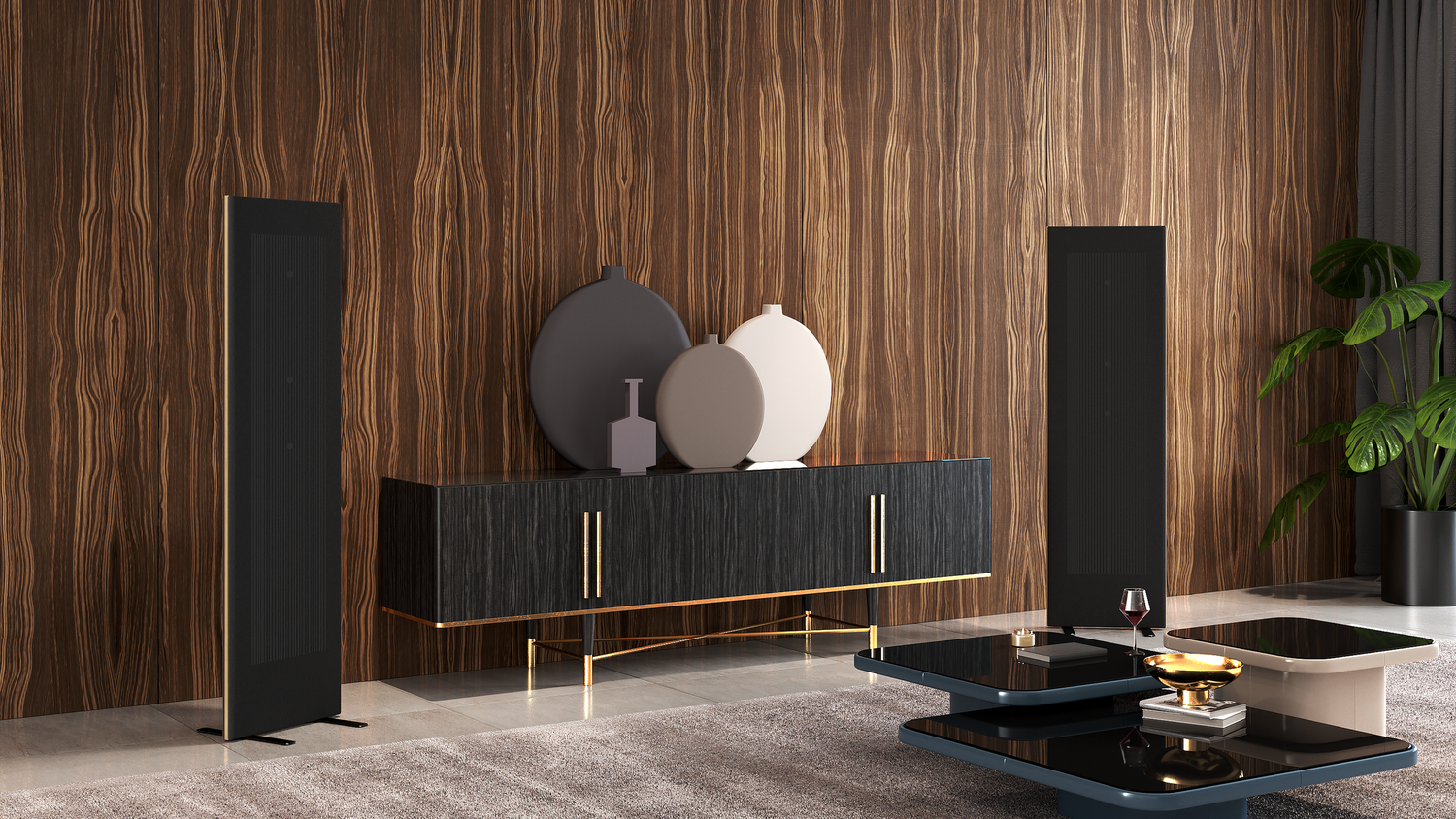
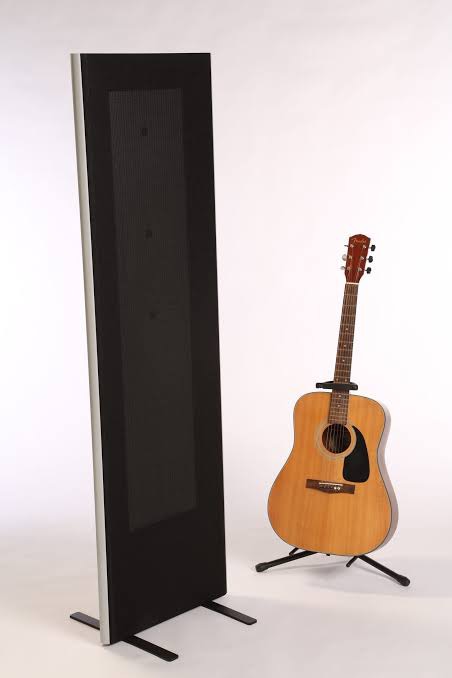
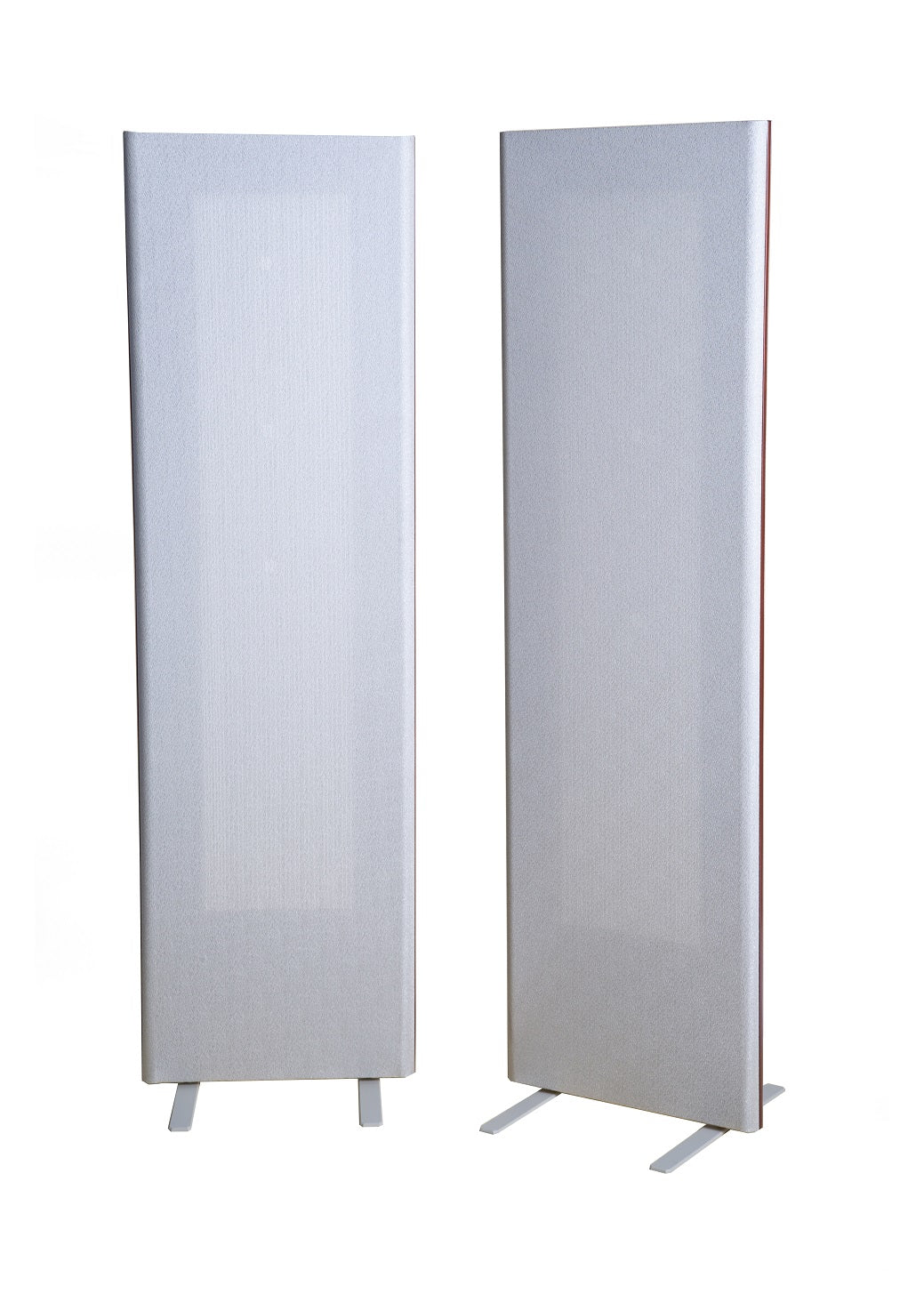
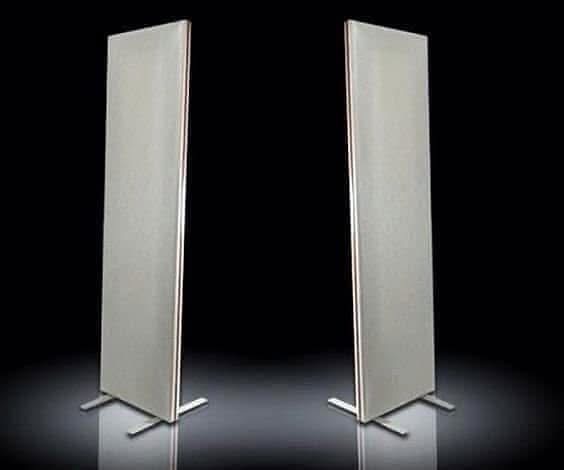
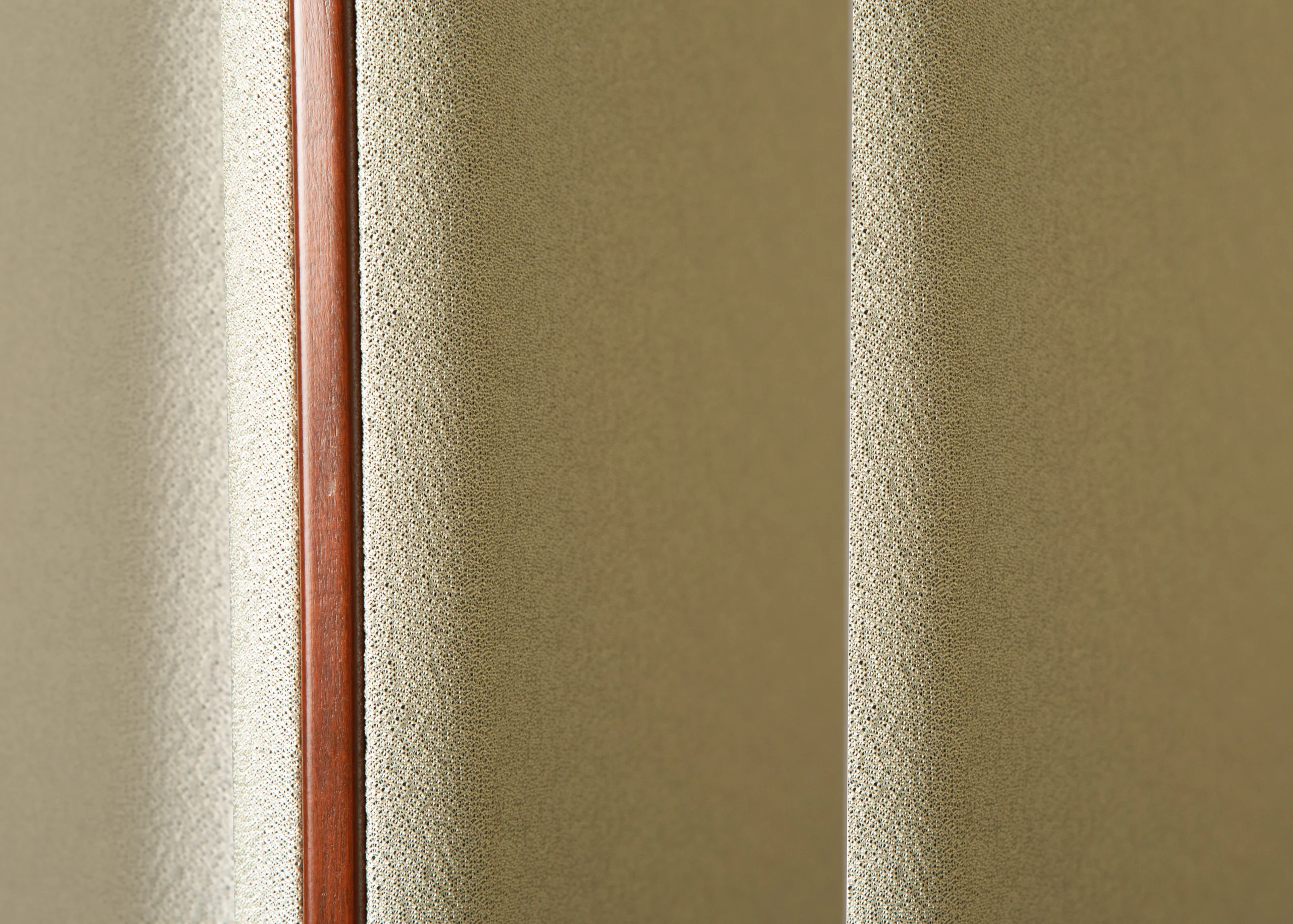
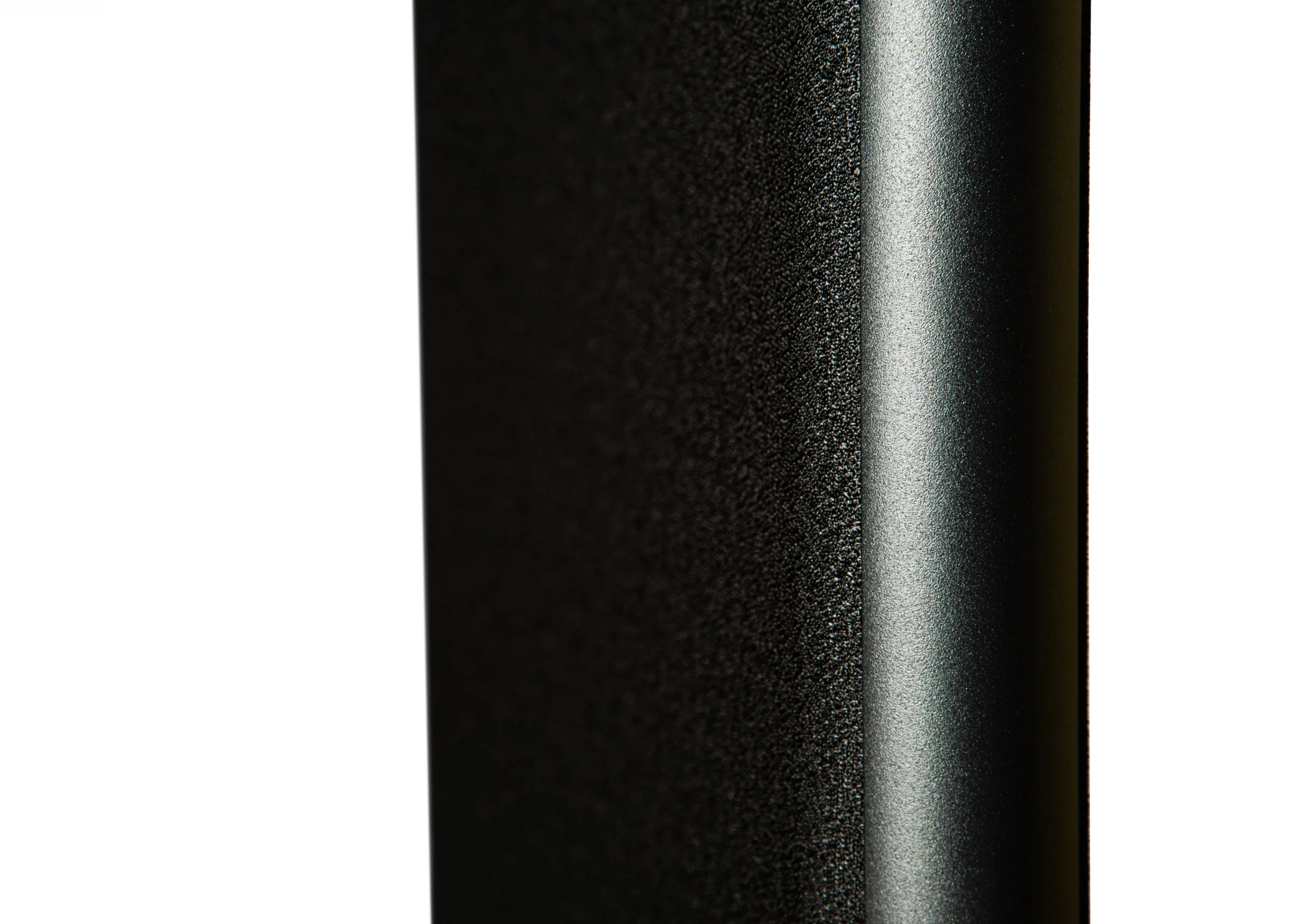
![[Mod_ Magnepan 1.7 I STD] Magnepan 1.7 I STD](https://www.save-av.com/wp-content/uploads/2025/03/Mod_-Magnepan-1.7-I-STD-Magnepan-1.7-I-STD.jpg)
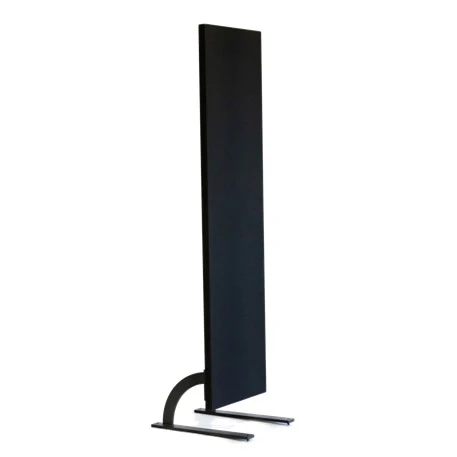
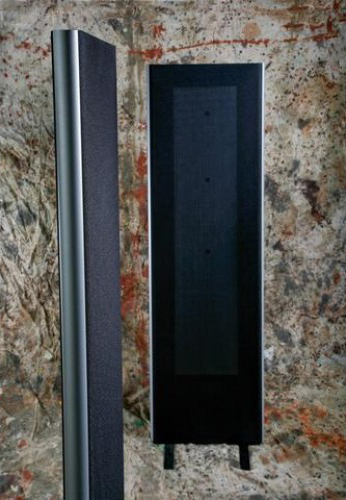
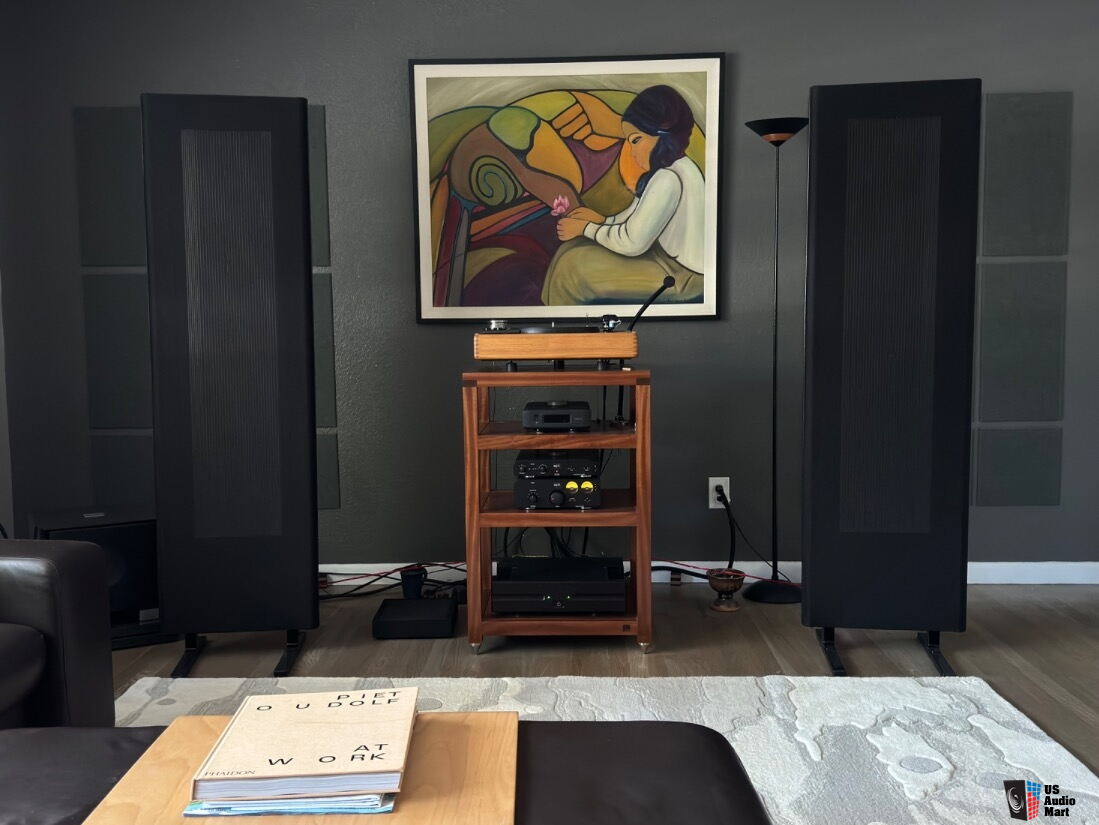
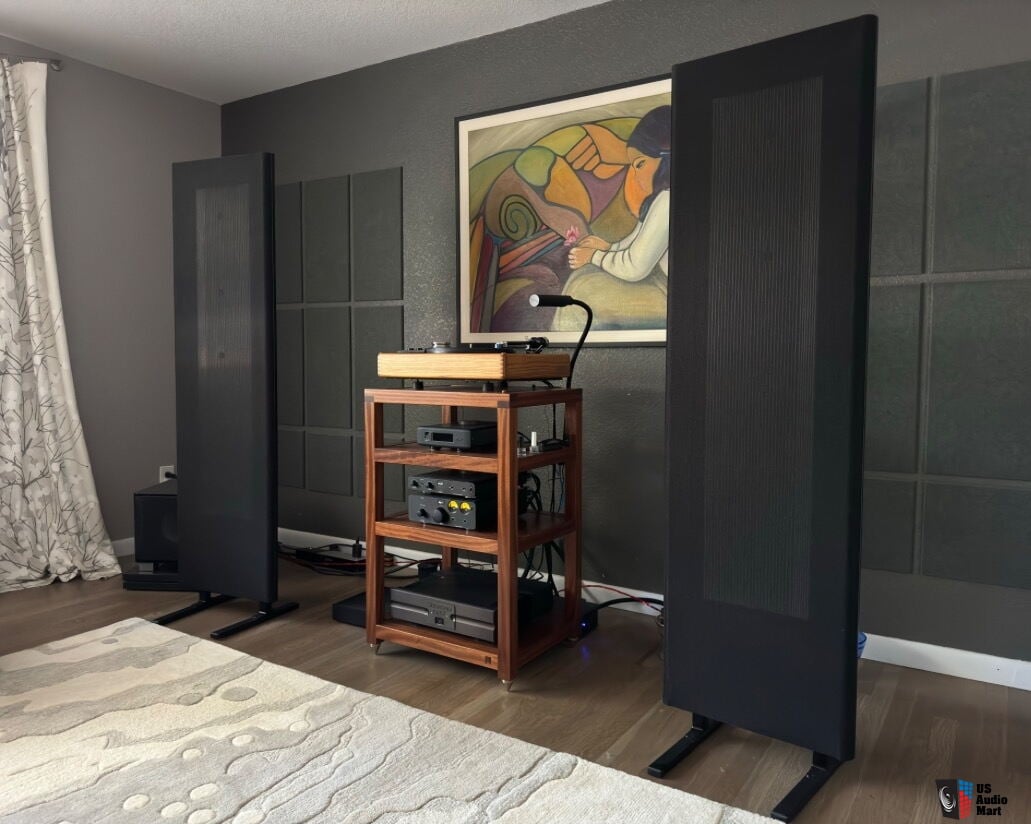








![[Mod_ Magnepan 1.7 I STD] Magnepan 1.7 I STD](https://www.save-av.com/wp-content/uploads/2025/03/Mod_-Magnepan-1.7-I-STD-Magnepan-1.7-I-STD-150x210.jpg)






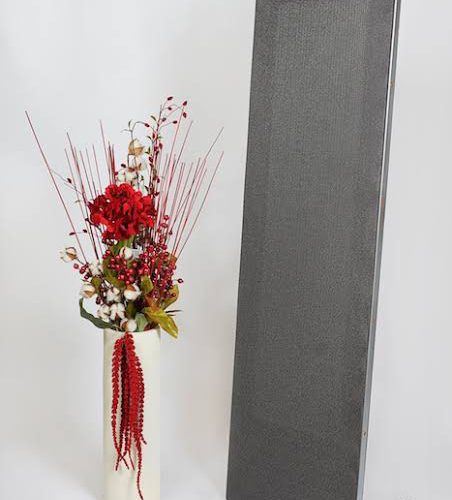
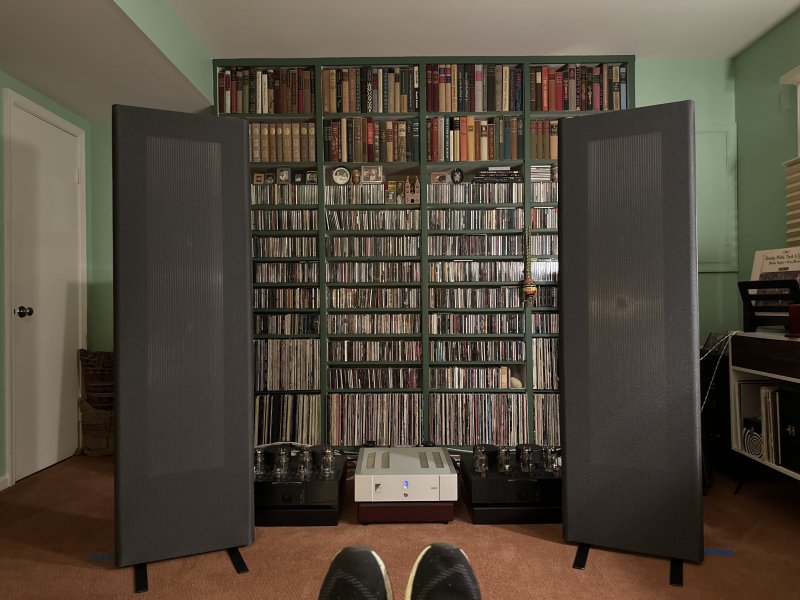


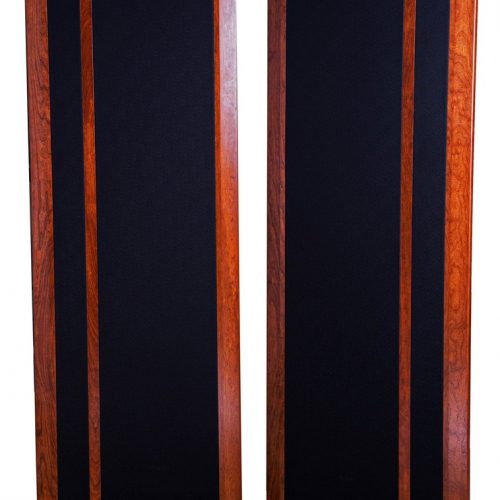
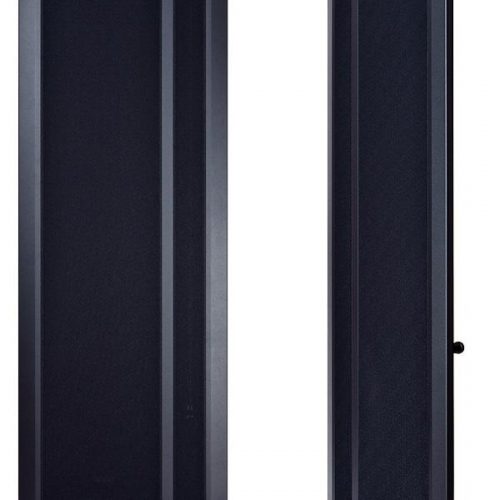
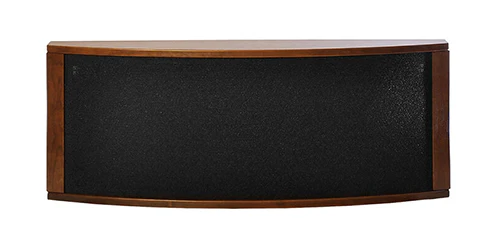
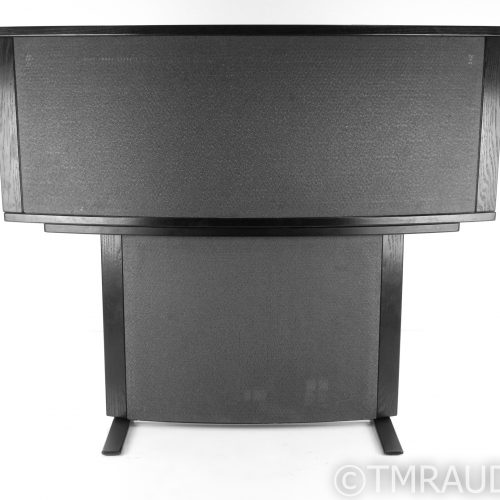

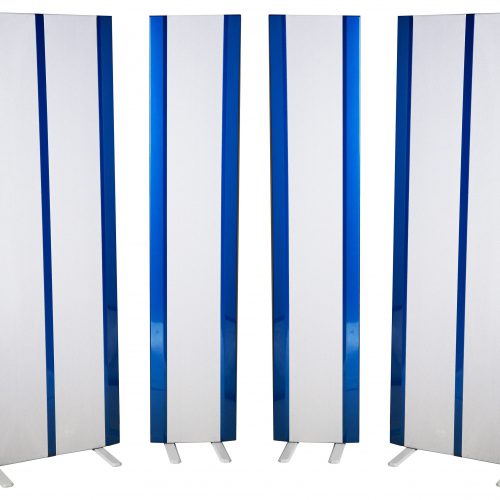
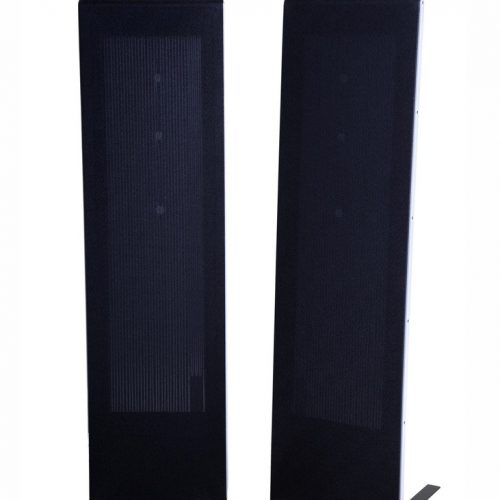
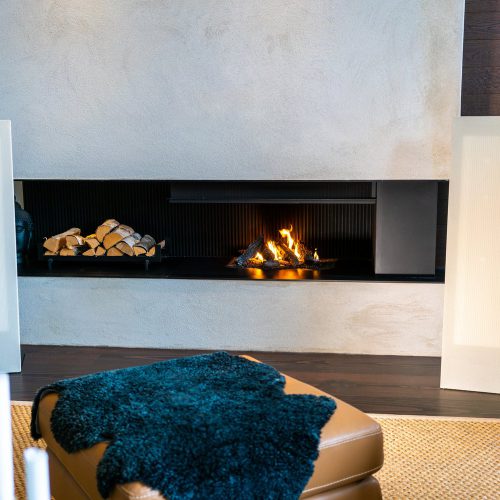
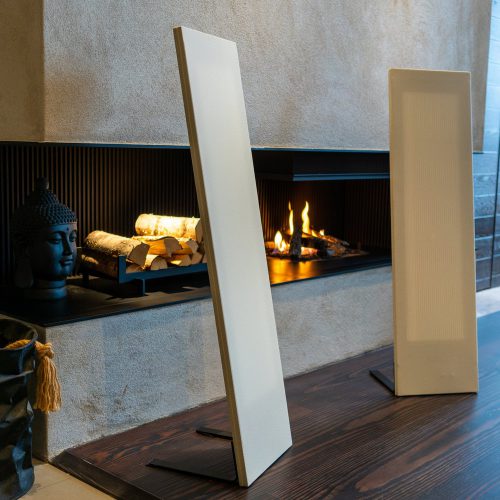
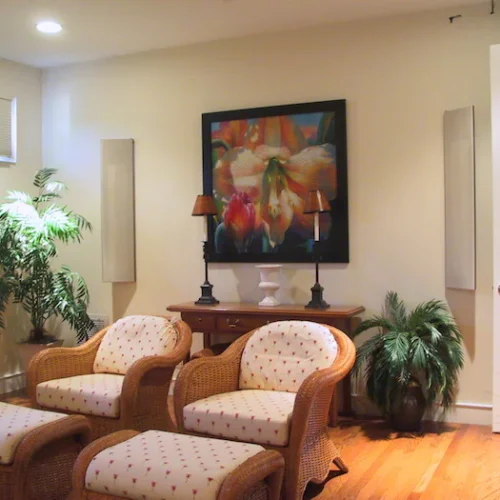
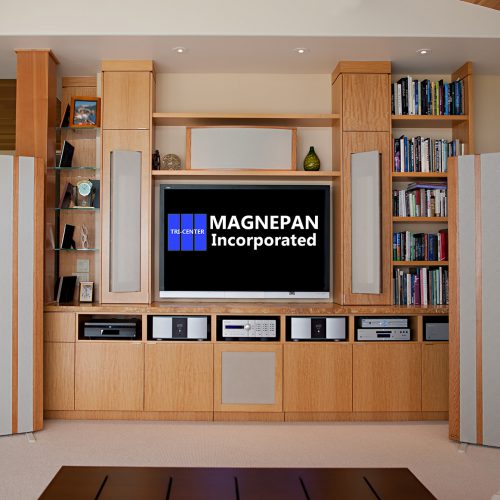
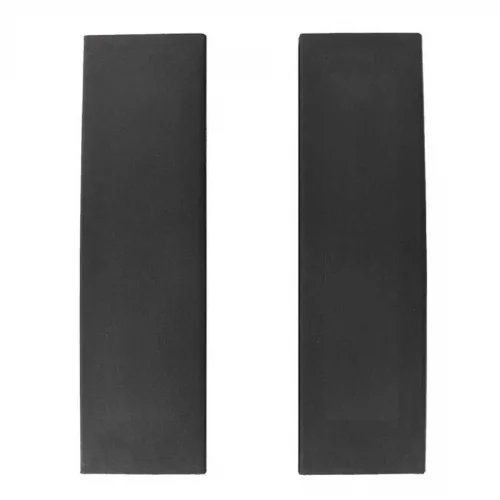
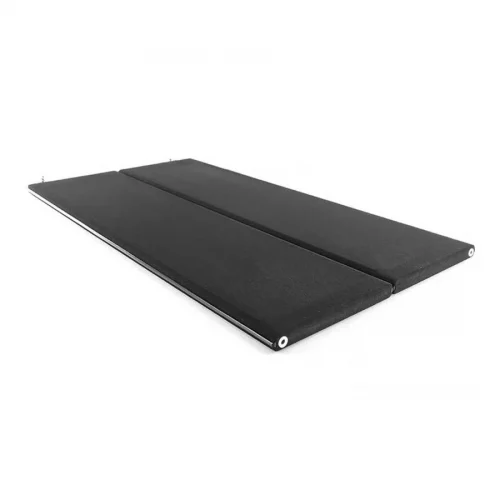
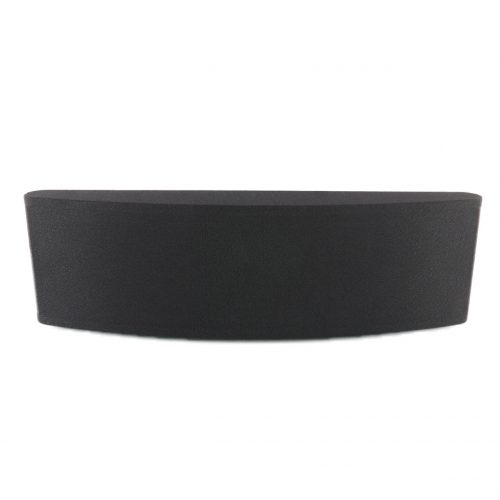
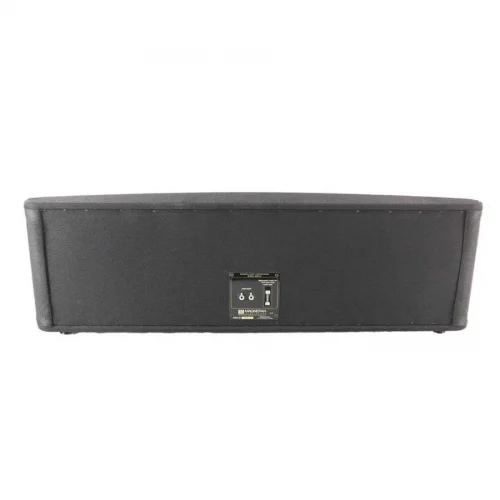


รีวิว
ยังไม่มีบทวิจารณ์